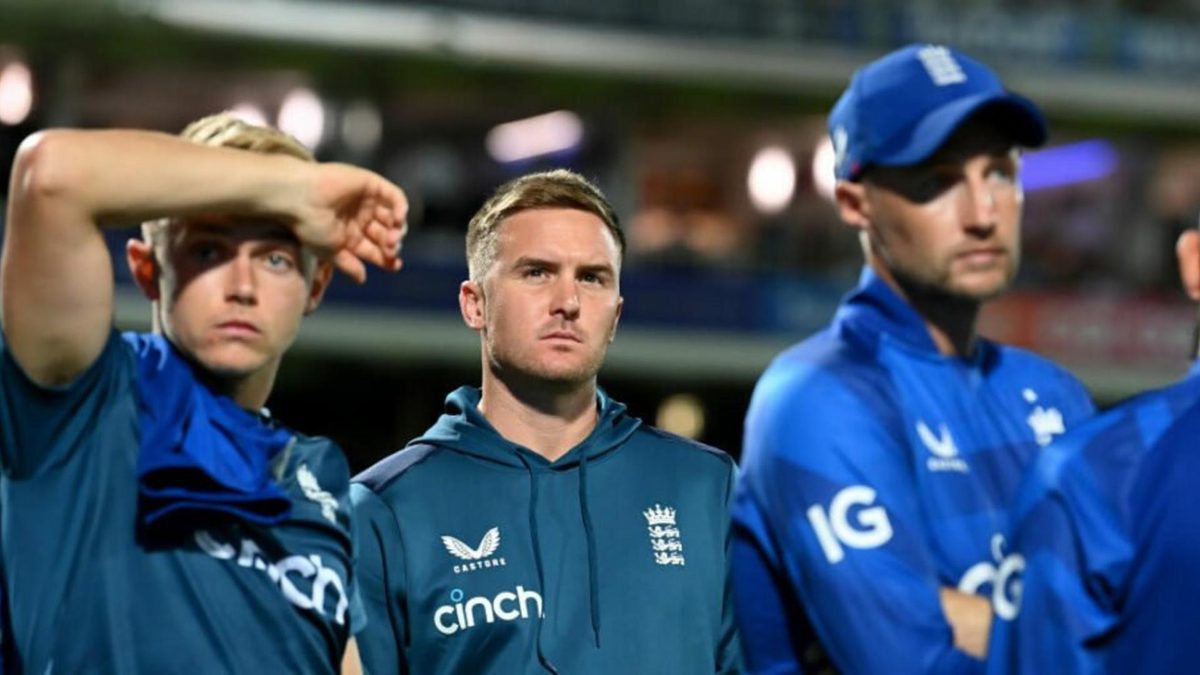
Jason Roy, a crucial component of the England side that won the 2019 World Cup, has been dropped from England’s 2023 World Cup squad having previously been included in the provisional 15-man group.
To bet on the World Cup with our Match Centre Partners bet365 head here.
Subscribe to the Wisden Cricket YouTube channel for post-match analysis, player interviews, and much more.
England were faced with an enviable decision to make in the batting department, essentially having to choose between leaving out one of the form ODI batters in the world in Dawid Malan, one of the game’s most exciting young talents in Harry Brook and a man who performed a crucial role in England’s journey from white-ball also-rans to the standard bearers of modern-day limited-overs cricket in Roy.
In the end, for the second time in as many years, Roy has been left out on the eve of a World Cup. Injuries to Roy and his longtime opening partner Jonny Bairstow left the door open for Malan and Brook to press forward their cases in the recent ODI series against New Zealand. It was an opportunity that Malan grasped firmly with both hands.
Two fifties and a century in his three appearances – he missed the second match for the birth of his son – continued his superb record in ODI cricket. After 21 matches, Malan averages over 60 and has centuries in each of his last five series which have been played across four continents. During his Lord’s hundred he equalled the record for the fastest Englishman to cross 1,000 ODI runs – his form demands not just a place in the squad, but a slot at the top of the order alongside Bairstow.
In contrast, Brook – who was not named in the initial preliminary World Cup squad – endured a stuttering series. Opening the batting in the first two games, he registered scores of 25 and two before scoring 10 from No.4 in the series finale. But once Malan had nailed down his spot in England’s first choice XI, a different decision had to be made – out of Brook and Roy, who is the more suitable spare batter?
Here there were two important factors that went against Roy. One, his specialism. In 116 ODIs, Roy had only ever opened the batting. If an England middle-order batter went down during the World Cup, at least one other player would have had to be shifted in order to accommodate Roy in the XI. Brook, although, vastly less experienced than Roy, is someone who has recently batted in a range of positions in limited-overs cricket, and could feasibly drop in anywhere in the top seven if necessary.
Also against Roy is his injury proneness, both recently and historically. A series of back spasms prevented Roy from getting on the park during the recent New Zealand series and in an ideal world, there would not be fitness concerns hanging over someone whose primary role in a squad is to fill in for other players’ injuries. Going further back, Roy also missed sections of each of his last two World Cups (the 2019 World Cup and the 2021 T20 World Cup).
[breakout id=”0″][/breakout]
Ultimately though, Roy’s own form left an opening for Malan. Roy’s characteristic belligerence up top became more sporadic in the years that followed England’s World Cup triumph. In the 2015-2019 World Cup cycle, Roy averaged 42.79 at a remarkable strike rate of 107.40. In the World Cup itself, he averaged over 63.28 and struck at 115.36.
Since then, those returns have waned. Though he has played more ODI cricket than any other England player since the 2019 World Cup, Roy has averaged 31.78 at a strike rate under 100. If you exclude runs scored against a less-than-full-strength Netherlands side in 2022, that average drops below 28 across 29 ODIs.
His World Cup exclusion may well represent the end of Roy’s England career. It’s been over a year since he was included in an England T20I squad and in ODI cricket, Roy will be 37 by the time of the 2027 World Cup comes around and with no domestic 50-over cricket available to the best young English players, England are likely to give opportunities to players likely to make the next global tournament.
If this is the end of Roy’s time as an international cricketer, it is worth dwelling on his importance in England’s white-ball revolution since 2015. Perhaps no player exemplified England’s fearless approach with the bat better than Roy whose selflessness set the tone for what followed him in the order. Alongside Bairstow, he was one half of arguably the most destructive opening pair in the format’s history. In 50 innings together, they put on 14 century opening stands and their average partnership of 58.44 is the highest in the format’s history for any pair to have opened more than 25 times together. There’s a ruthlessness to the call to omit an ODI player of Roy’s calibre but his form – and the depth of England’s resources – gave England a decision to make.








